
In the Monument exhibit, I collaborated with Dr. Tracy Steen to explore the meaning of monuments. Who among us is worthy of a monument? How can we best memorialize great actions and great people? Should monuments have an expiration date?
Dr. Steen and I shared Monument on Facebook, posting photos of memorials in Baltimore, Boston, Chicago, Concord, New York, Philadelphia, and Washington, D.C. that are underappreciated.
The Wharton School, the business school of the University of Pennsylvania, granted Monument a Social Media Leadership Award, recognizing the project as an example of how to use social media to promote a more unified world.
TRACY STEEN
Tracy Steen is a psychologist and artist in Philadelphia. She received a Ph.D. in clinical psychology from the University of Michigan in 2003 and moved to Philadelphia to complete a postdoctoral fellowship in positive psychology at the University of Pennsylvania. A chapter about courage that she wrote for Character Strengths and Virtues influenced the early stages of the Monument project, but her main source of inspiration was her family’s tradition of military service.
MONUMENT
We began our exploration by photographing outdoor monuments in Philadelphia, Baltimore, and Washington, D.C., and continued in New York, Boston, Concord, and Chicago. Many of the monuments were created over the course of decades during the golden age of fine art sculpture from 1870 to 1914. Artists from Europe and the United States competed for both public and private commissions to create sculptures in stone and bronze. Monuments were built to last and were unveiled in places of prominence, forming permanent tributes to people and times worth remembering.
Because communities shift over time, some monuments now suffer from overcrowding or, worse, isolation. To keep the focus on the subjects of the monuments, we found angles that isolated the statues from their surroundings. Shooting only on overcast days, we photographed all of the monuments against the natural, neutral backdrop of a whitish grey sky.
The first of these photographs were exhibited from July to September 2012 at Giant Steps Gallery in the Rittenhouse Square neighborhood of Philadelphia. We continued the Monument exhibit online by sharing our photographs on Facebook under the art profiles for Tom Lincoln and Tracy Steen.
Click on the images below to view selected photographs from the exhibit.
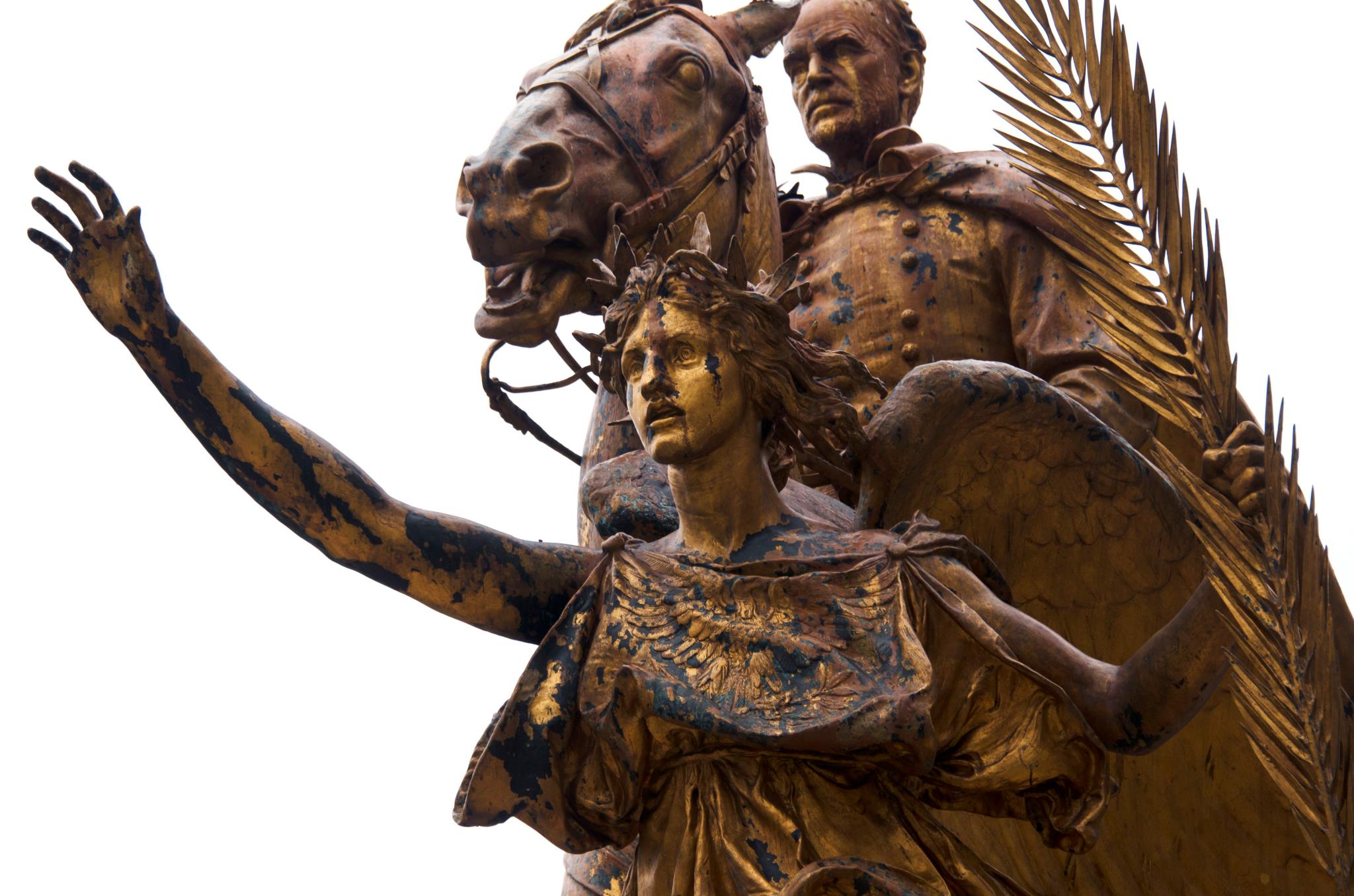
GENERAL WILLIAM TECUMSEH SHERMAN
This monument to General William Tecumseh Sherman is the last great work of famed sculptor Augustus Saint-Gaudens. Sherman was most famous for his army’s destruction of property in Georgia, including the burning of a large portion of Atlanta, hastening the end of the Civil War.
The monument stands in the middle of Manhattan’s Grand Army Plaza at the southeast entrance to Central Park, and has been surrounded by tourist attractions like the Plaza Hotel, Bergdorf Goodman, F.A.O. Schwarz, and New York’s flagship Apple Store.
An angel of peace is leading Sherman. The model for the angel was Harriette (“Hettie”) Eugenia Anderson, an African-American woman from Georgia. Saint-Gaudens is reputed to have also relied on Davida Johnson, his mistress, for the angel’s face.
After this photograph was taken, the monument was renovated, but the regilding process failed. Because of hairline cracks in the new gilding, the regilding process must begin anew.
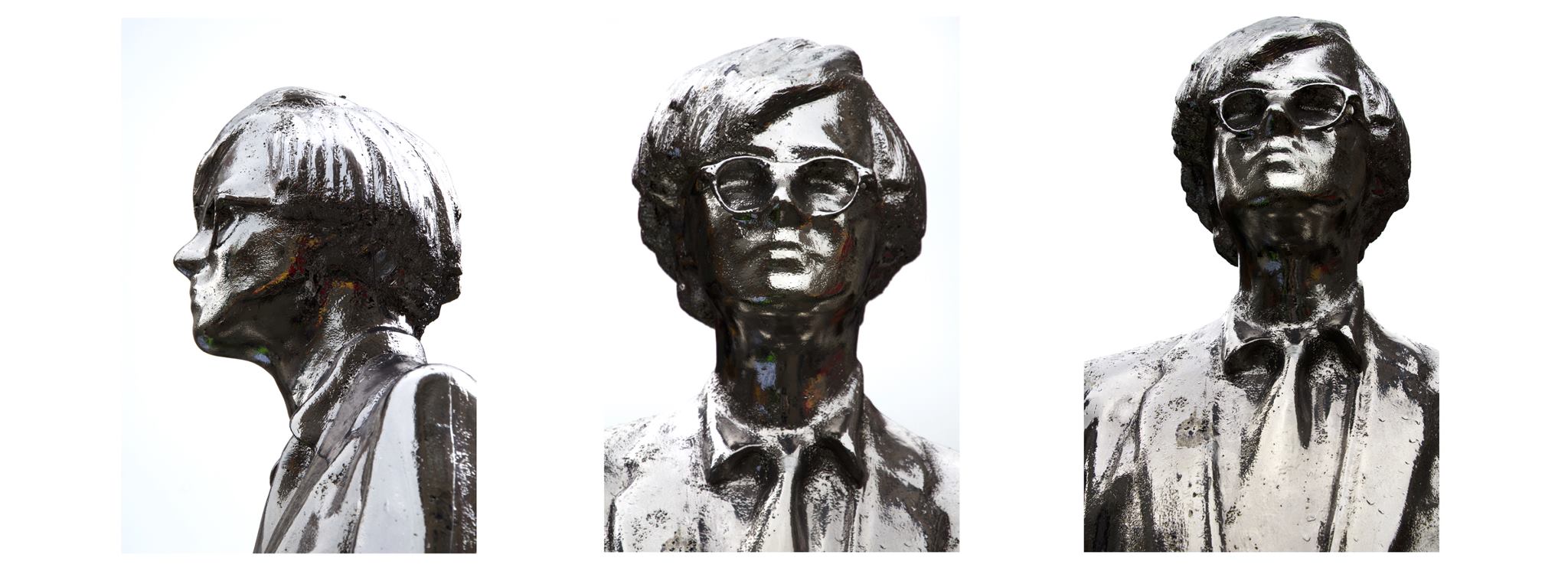
ANDY WARHOL
Andy Warhol’s pop art movement helped open the art world to everyone. This 2011 monument by Rob Pruitt was temporarily on display on Union Square in New York City outside what used to be Warhol’s Factory. Other sculptures on the square include monuments to Abraham Lincoln, George Washington, the Marquis de Lafayette, and Mahatma Gandhi.
The Warhol monument is 10 feet tall and covered in chrome. We photographed it on Saturday, July 28, 2012, just before a torrential rainstorm.
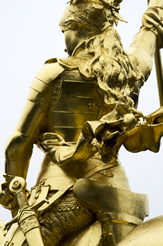
JOAN OF ARC
Napoleon III commissioned this statue of Joan of Arc to help re-establish French confidence following defeats by the Prussian army in 1870. During the medieval clash for control of France known as the Hundred Years’ War, Joan of Arc was a hero to the forces of Charles VII of Valois. Inspired by saints, she rose from humble circumstances to lead an army against the other claimant to the French throne, Henry VI of England. Joan of Arc was martyred in 1431, but her victory at Orléans in 1429 had already turned the tide of the war in favor of the Valois dynasty.
This monument is an example of how public art can be successfully relocated and renovated. Emmanuel Fremmier created Joan of Arc in 1874, and in 1890 the Fairmount Park Art Association bought the statue ungilded. Joan of Arc was first placed at the east end of the Girard Avenue Bridge, but this location was not a success. In 1959, the statue was gilded and moved to its current location, across from the Philadelphia Museum of Art on Kelly Drive. Joan of Arc has been an inspiration in this location. The statue was removed to repair a crack in 2009, re-gilded, and returned in 2010.
This statue is the original. Copies of a subsequent version, also gilded, exist in New Orleans, Louisiana; Portland, Oregon; and on the Place des Pyramides in central Paris outside the Louvre. Additional ungilded copies of the subsequent version exist in Nancy, France, and Melbourne, Australia.
Most viewers see Joan of Arc from the front and at a distance as they drive quickly past. We captured the ribbons flowing behind her and the fine detailing of her armor by standing on a ladder and using a zoom lens.
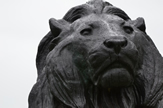
SITTING LION
Antoine-Louis Barye—known also for creating the lion statue in Rittenhouse Square in Philadelphia—designed Sitting Lion in 1846. It was commissioned by Louis-Philippe d’Orléans, “King of the French.” The original Sitting Lion is in Paris. Famed art collector William T. Walters donated this copy to the City of Baltimore in 1885.
The monument is a tribute to Louis-Philippe’s liberal revolution that overthrew the Bourbon monarchy. His reformist, constitutional July Monarchy came to power during a three-day revolution from July 27 to July 20, 1830. The lion references Leo, the sign of the zodiac that governs late July. The July Monarchy was itself overthrown in 1848 when a revolution ushered in the more liberal but short-lived Second Republic.
Sitting Lion is an example of a monument that has thrived over time. Located in a park outside the Walters family home in the Mount Vernon neighborhood of Baltimore, the monument has not been moved since it was unveiled in 1885. The nearby Walters Art Museum is filled with treasures, and the park around the statue is well landscaped and well traveled. By treating the statue with care, Baltimore honors itself, the Walters family, and the ideals of the artist.
The photograph was taken in April 2012 during a rainstorm. The lion’s dignified mien, impervious to the streams of water running down his face, seems an appropriate symbol of the monument’s resilience.
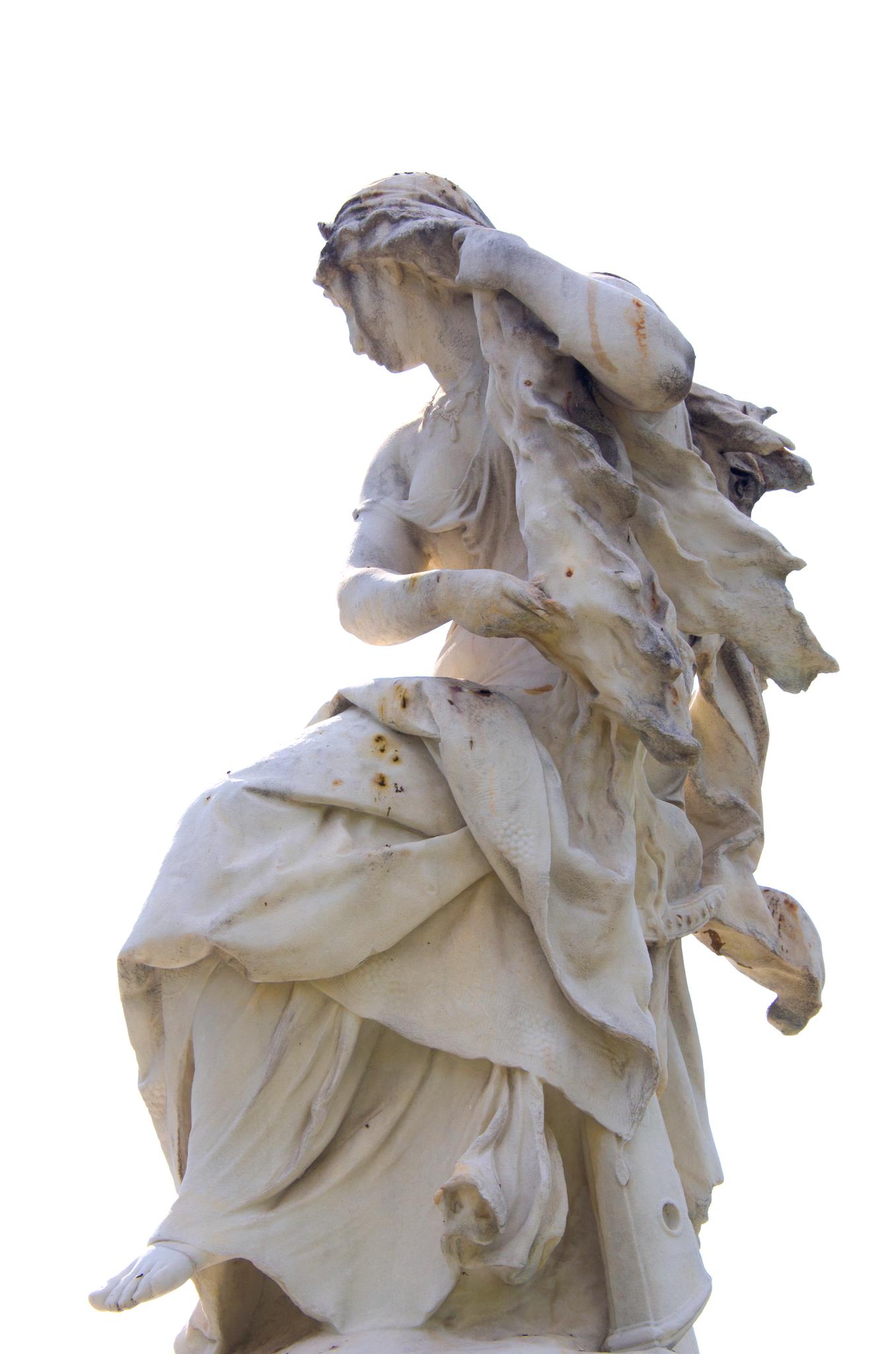
LORELEI
This sculpture by Ernst Gustav Herter depicts Lorelei, a German mythical figure popularized by 19th century poet and critic Heinrich Heine. In Heine’s poem, Lorelei sits on rocks above the Rhine, combing her hair and luring sailors to their doom with her beautiful singing.
The sculpture and the ornate fountain that surrounds it are known as the Heine Memorial. Born to a Jewish family, Heine converted to Lutheranism as part of a failed effort to gain employment in public service. He opposed the rise of German nationalism and left Germany in 1831 to become an expatriate in Paris.
Commissioned in 1888 for Heine’s birth city of Dusseldorf with the financial backing of Empress Elizabeth of Austria, the monument was completed in 1893 but rejected by the city, in part due to anti-semitism. A group of German Americans then purchased it for New York City, with the recommendation that it be placed at the southwest entrance to Central Park. After six years of wrangling, however, the monument was sent to a quiet park north of the island of Manhattan in the Bronx. Because of extraordinary vandalism almost from the moment of the monument's unveiling, it has been extensively restored numerous times.
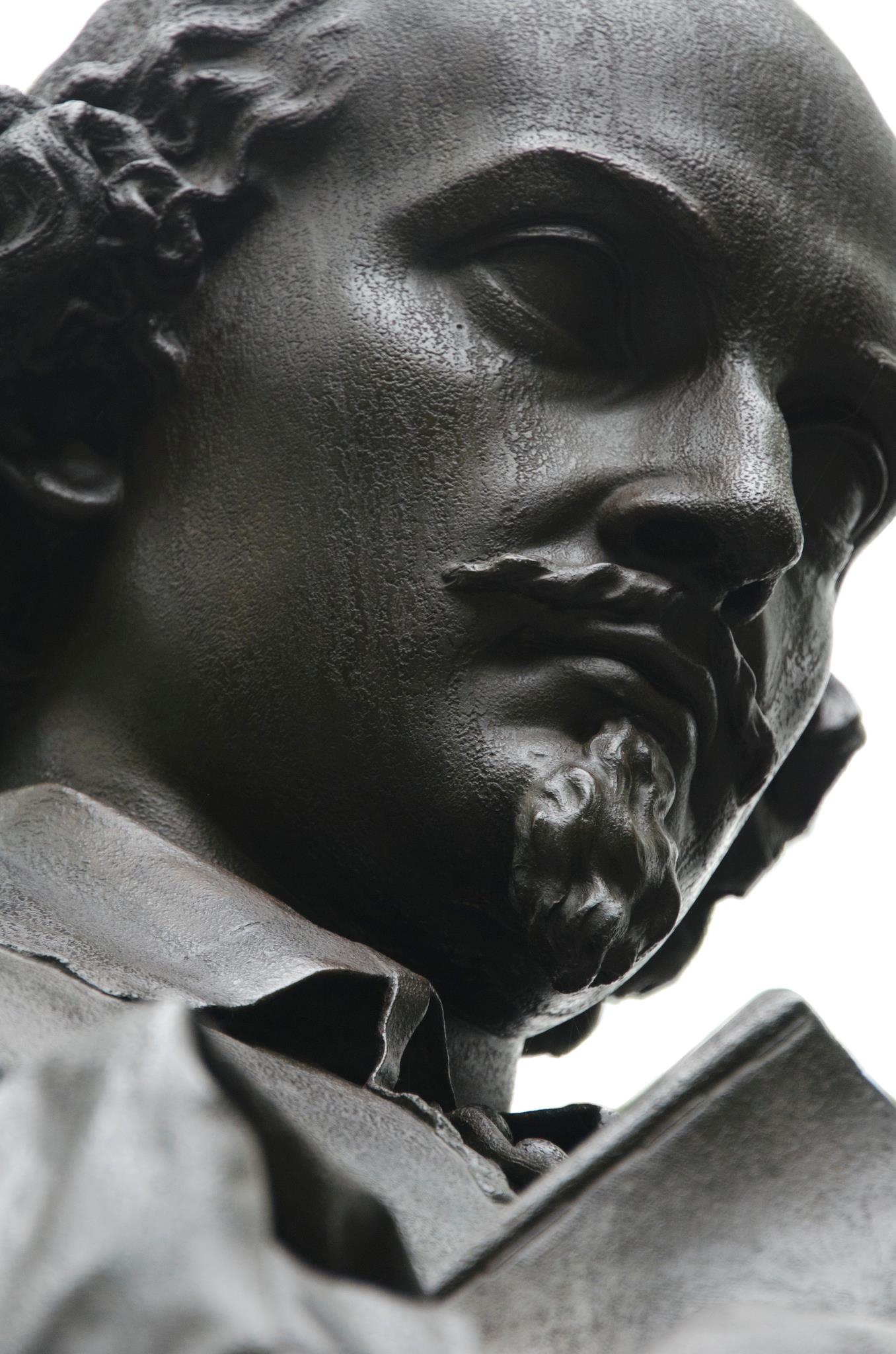
WILLIAM SHAKESPEARE
"All the world's a stage,
And all the men and women merely players;
They have their exits and their entrances,
And one man in his time plays many parts..."
--William Shakespeare, As You Like It, Act II, Scene VII
This monument to William Shakespeare in Central Park is by John Quincy Adams Ward, who sculpted many other statues in New York City, including the statue of George Washington on Wall Street.
A group of New York actors and theatrical managers laid the cornerstone of the Shakespeare monument in 1864 (at the height of the Civil War) to coincide with the 300th anniversary of Shakespeare’s birth, but the monument was not cast until 1870 and not unveiled until 1872.
Among the supporters of the monument was the famous Shakespearean actor Edwin Booth, brother of the infamous actor John Wilkes Booth. A performance of Shakespeare’s Julius Caesar in 1864 featured the Booth brothers (including the eldest brother, Junius) and raised funds for the monument. After the assassination of Abraham Lincoln, Edwin disowned any association with John Wilkes.
In the years following the Civil War, Edwin attained even greater success on stage. He later donated his home on Manhattan’s Gramercy Park to the club he founded, the Player’s Club. Gramercy Park is closed to the public, but a statue of Edwin Booth as Hamlet can be seen from a distance through iron railings.

THE UNION
This print depicts four Philadelphia monuments to great Union generals of the Civil War: Generals Ulysses S. Grant, George B. McClellan, John F. Reynolds, and George G. Meade. None of the four monuments receives sufficient attention or respect in its current location. Tracy Steen and I propose to honor the generals, Philadelphia, and the Union by uniting the monuments and positioning them on the vacant portions of Eakins Oval at the top of the Benjamin Franklin Parkway.
It seems particularly appropriate for the monuments to be displayed together in the heart of Philadelphia’s current art and cultural district. The four sculptures complement the design and history of the Parkway and the Philadelphia Museum of Art. On Eakins Oval each general could be featured prominently, free of clutter and distraction. The addition of the monuments on Eakins Oval would also encourage foot traffic between the Museum of Art, the Rodin Museum, and the Barnes Collection. United, the collection of monuments would surely become a treasured destination.
Click here for a PDF of the proposal Tracy Steen and I submitted to Philadelphia Commissioner Michael DiBerardinis and PennPraxis in response to their request for ideas about how to improve the Benjamin Franklin Parkway.
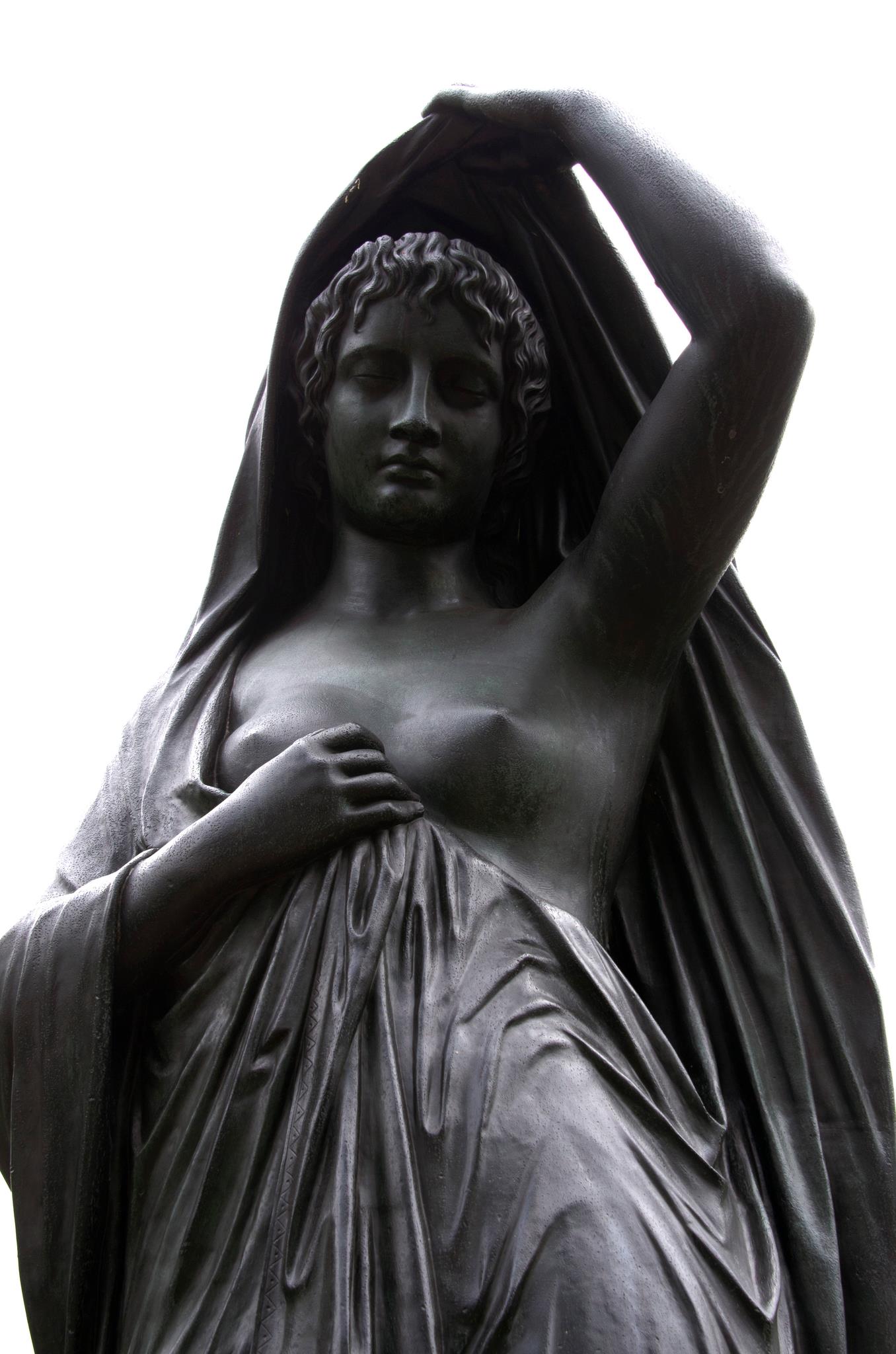
DEATH SHROUDING THE BEAUTIFUL BLOOM OF YOUTH
The official title of this statue is "Night." Kept at the Horticultural Gardens of Philadelphia in the heart of Fairmount Park, "Night" was installed in 1872. However, Edward Stauch, the sculptor of the statue, was not alive for the installation. He died on assignment as an artist during the American Civil War.
The image of a shroud symbolizing mortality was common to many great works of art in America in the late 19th Century.